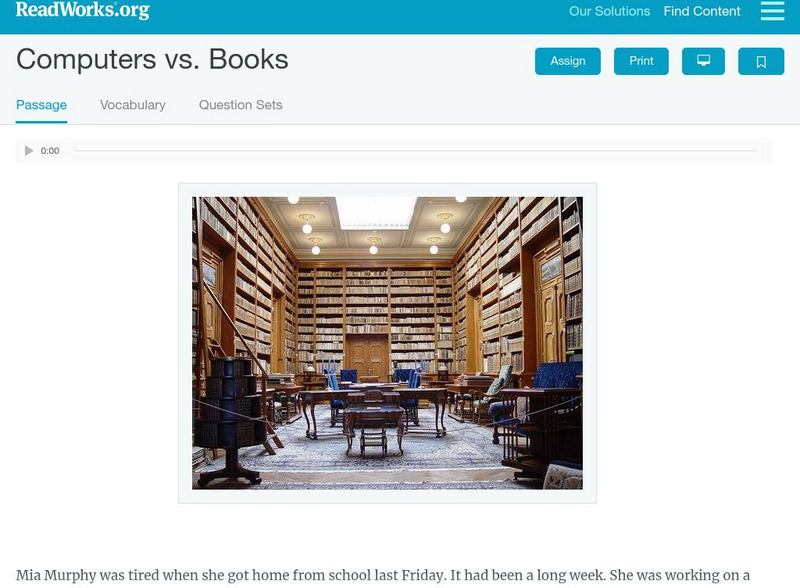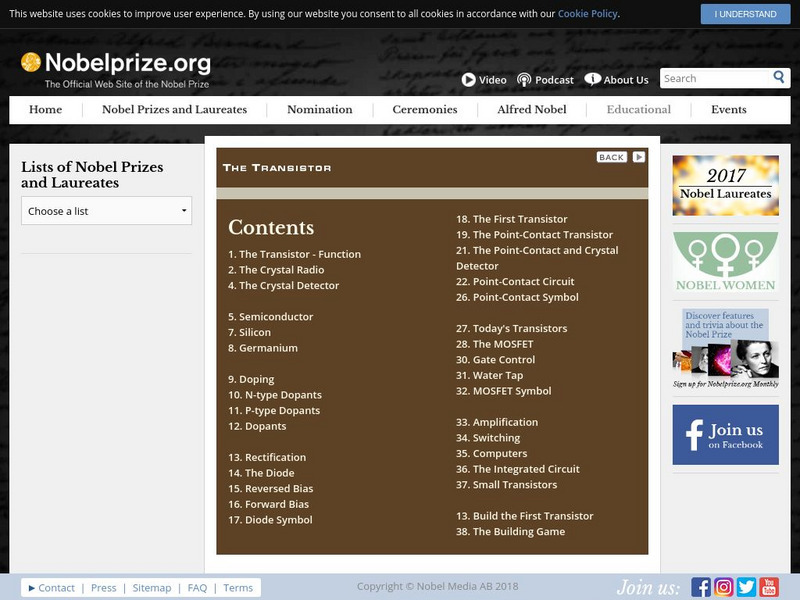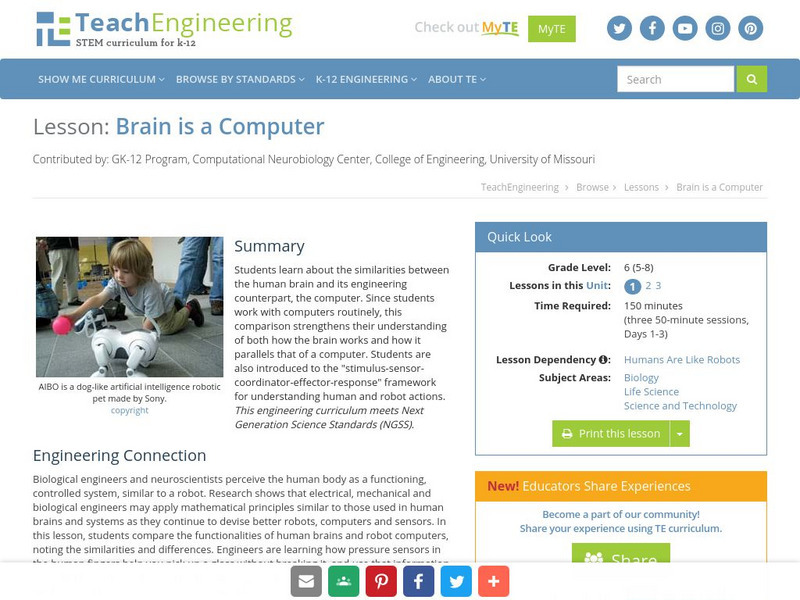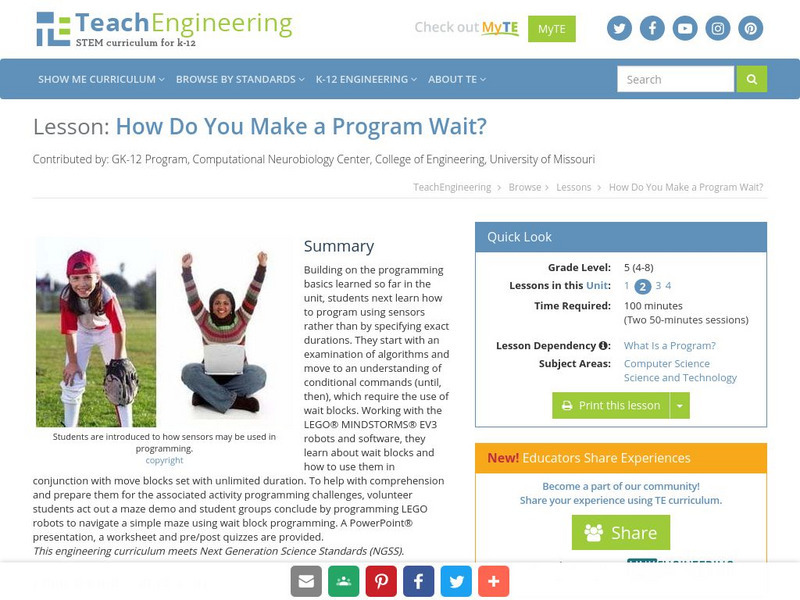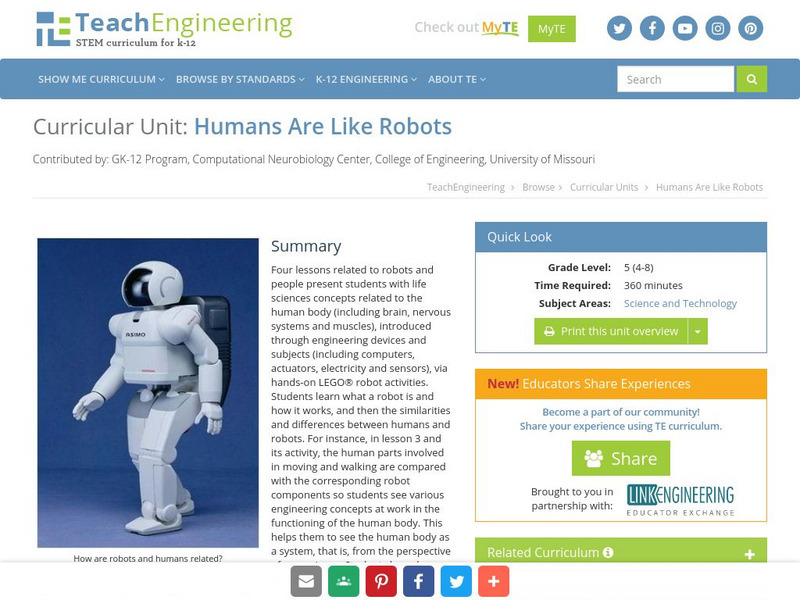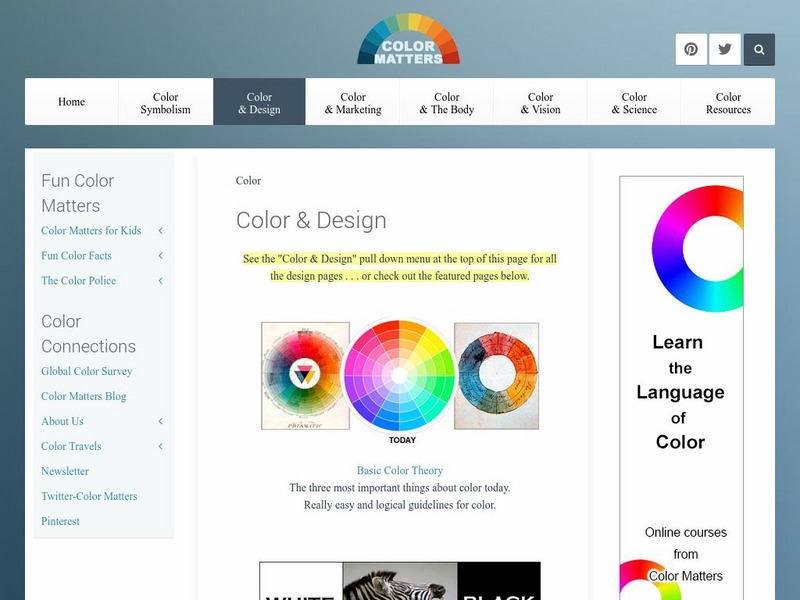Computer History Museum
Computer History Museum: The Babbage Engine
Charles Babbage (1791-1871) was a computer pioneer who designed the first automatic computing engine. Trace the history of the many computers he designed and how they worked. View a video [1:39] of Difference Engine No.2, in operation.
TED Talks
Ted: Ted Ed: How Computers Translate Human Language
Is a universal translator possible in real life? We already have many programs that claim to be able to take a word, sentence, or entire book in one language and translate it into almost any other. The reality, however, is a bit more...
Read Works
Read Works: I Break Stuff for a Living
[Free Registration/Login Required] An autobiographical text about a young man who grew up interested in taking things apart to find out how they work, and how that later became career. A question sheet is available to help students build...
Khan Academy
Khan Academy: Ap Computer Science Principles
A basic introductory course to computer science. Covers what computers are, their parts, and what they do; what the Internet is and how it works; some basic programming concepts; algorithms; data analysis; and global impact of computers...
Technology Student
Technology Student: Computer Numerical Control (Cnc)
This site describes how Computer Numerical Control (CNC) machines work and how they are used in computer-aided manufacturing (CAM).
Other
Welcome to Phishing info.org. Learn How to Fight Email Scams Here
This site provides information about how phishing works, how to protect yourself and where to go for help.
University of Canterbury
University of Canterbury: Cs Unplugged: Primary Enrichment Program [Pdf]
This unit introduces students to some of the building blocks of how computers work without using a computer at all. The lessons keep students actively involved in communication, problem solving, creativity, and thinking skills in...
TeachEngineering
Teach Engineering: Program Analysis Using App Inventor
In computer science, program analysis is used to determine the behavior of computer programs. Flow charts are an important tool for understanding how programs work by tracing control flow. Control flow is a graphical representation of...
Read Works
Read Works: Computers vs. Books
[Free Registration/Login Required] A literary text about a girl named Mia who learned how homework was different when her parents were growing up. A question sheet is available to help students build skills in reading comprehension.
Nobel Media AB
The Nobel Prize: The Transistor
This site from the Nobel Foundation provides detailed information on how the transistor works. The site provides illustrations and animations to help clarify the concepts presented.
TeachEngineering
Teach Engineering: Brain Is a Computer
Students learn about the similarities between the human brain and its engineering counterpart, the computer. Since students work with computers routinely, this comparison strengthens their understanding of both how the brain works and...
TeachEngineering
Teach Engineering: Hearing: How Do Our Ears Work?
Students learn about the anatomy of the ear and how the ears work as a sound sensor. Ear anatomy parts and structures are explained in detail, as well as how sound is transmitted mechanically and then electrically through them to the...
TeachEngineering
Teach Engineering: How Do You Make a Program Wait?
Building on the programming basics learned so far in a corresponding Robotics unit, students learn how to program using sensors rather than by specifying exact durations. Working with the LEGO MINDSTORMS NXT robots and software, they...
TeachEngineering
Teach Engineering: How Does a Light Sensor Work?
A mini-activity, which uses LEGO MINDSTORMS NXT intelligent bricks and light sensors gives students a chance to investigate how light sensors function in preparation for the associated activity involving the light sensors and taskbots.
TeachEngineering
Teach Engineering: How Does a Sound Sensor Work?
Students learn about how sound sensors work, reinforcing their similarities to the human sense of hearing. This lesson and its associated activity enable students to appreciate how robots can take sensor input and use it to make...
TeachEngineering
Teach Engineering: How Does a Robot Work?
This lesson introduces electricity, batteries and motors using a LEGO MINDSTORMS NXT robot. The associated activity guides learners to build a simple LEGO NXT set-up and see the practical implementation of the concepts discussed. Before...
Goodwill
Gcf Global: Computer Science: Hardware and Software
Learn how hardware and software work together and how they affect computing systems.
BBC
Bbc: Bitesize: What Is Code?
Learn all about coding including some background of what it is and how it works. Play a game that helps with the understanding of what can be programmed.
TeachEngineering
Teach Engineering: Humans Are Like Robots
Four lessons related to robots and people present students with life sciences concepts related to the human body (including brain, nervous systems and muscles), introduced through engineering devices and subjects (including computers,...
TeachEngineering
Teach Engineering: Reflecting on Human Reflexes
Students learn about human reflexes, how our bodies react to stimuli and how some body reactions and movements are controlled automatically, without thinking consciously about the movement or responses. In the associated activity,...
TeachEngineering
Teach Engineering: Line Follower Challenge
Student groups are challenged to program robots with light sensors to follow a black line. Learning both the logic and skills behind programming robots for this challenge helps students improve their understanding of how robots work, and...
Wikimedia
Wikipedia: Raster Graphics (Bitmap)
Encyclopedia entry that defines what a Raster graphic (Bitmap) is and explains how it works. Includes a nice illustration and an example of how a bitmap picture is constructed. Links to related information are available.
TeachEngineering
Teach Engineering: What Is Bluetooth?
Students learn about electrical connections, how they work, and their pervasiveness in our world. Two specific skills explored are Morse code and the function of Bluetooth. Using bluetooth, they control LEGO robots remotely from Android...
Other
Color Matters: Color and Design
This site discusses color and how it works in art, science, and the mind. Explore the many ways that color affects us.






![University of Canterbury: Cs Unplugged: Primary Enrichment Program [Pdf] Lesson Plan University of Canterbury: Cs Unplugged: Primary Enrichment Program [Pdf] Lesson Plan](https://d15y2dacu3jp90.cloudfront.net/images/attachment_defaults/resource/large/FPO-knovation.png)

